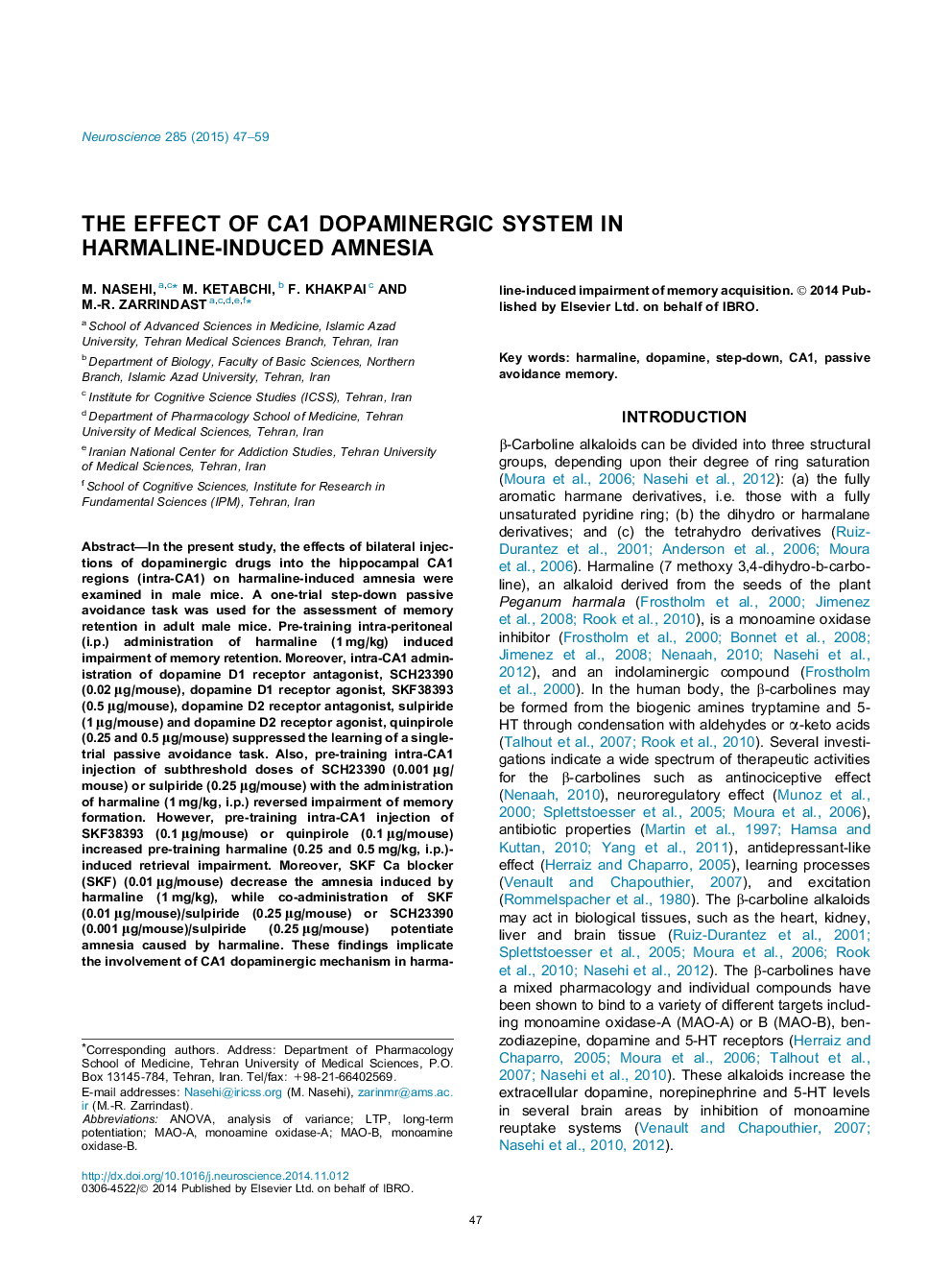| Article ID | Journal | Published Year | Pages | File Type |
|---|---|---|---|---|
| 6273151 | Neuroscience | 2015 | 13 Pages |
Abstract
In the present study, the effects of bilateral injections of dopaminergic drugs into the hippocampal CA1 regions (intra-CA1) on harmaline-induced amnesia were examined in male mice. A one-trial step-down passive avoidance task was used for the assessment of memory retention in adult male mice. Pre-training intra-peritoneal (i.p.) administration of harmaline (1 mg/kg) induced impairment of memory retention. Moreover, intra-CA1 administration of dopamine D1 receptor antagonist, SCH23390 (0.02 μg/mouse), dopamine D1 receptor agonist, SKF38393 (0.5 μg/mouse), dopamine D2 receptor antagonist, sulpiride (1 μg/mouse) and dopamine D2 receptor agonist, quinpirole (0.25 and 0.5 μg/mouse) suppressed the learning of a single-trial passive avoidance task. Also, pre-training intra-CA1 injection of subthreshold doses of SCH23390 (0.001 μg/mouse) or sulpiride (0.25 μg/mouse) with the administration of harmaline (1 mg/kg, i.p.) reversed impairment of memory formation. However, pre-training intra-CA1 injection of SKF38393 (0.1 μg/mouse) or quinpirole (0.1 μg/mouse) increased pre-training harmaline (0.25 and 0.5 mg/kg, i.p.)-induced retrieval impairment. Moreover, SKF Ca blocker (SKF) (0.01 μg/mouse) decrease the amnesia induced by harmaline (1 mg/kg), while co-administration of SKF (0.01 μg/mouse)/sulpiride (0.25 μg/mouse) or SCH23390 (0.001 μg/mouse)/sulpiride (0.25 μg/mouse) potentiate amnesia caused by harmaline. These findings implicate the involvement of CA1 dopaminergic mechanism in harmaline-induced impairment of memory acquisition.
Keywords
Related Topics
Life Sciences
Neuroscience
Neuroscience (General)
Authors
M. Nasehi, M. Ketabchi, F. Khakpai, M.-R. Zarrindast,
